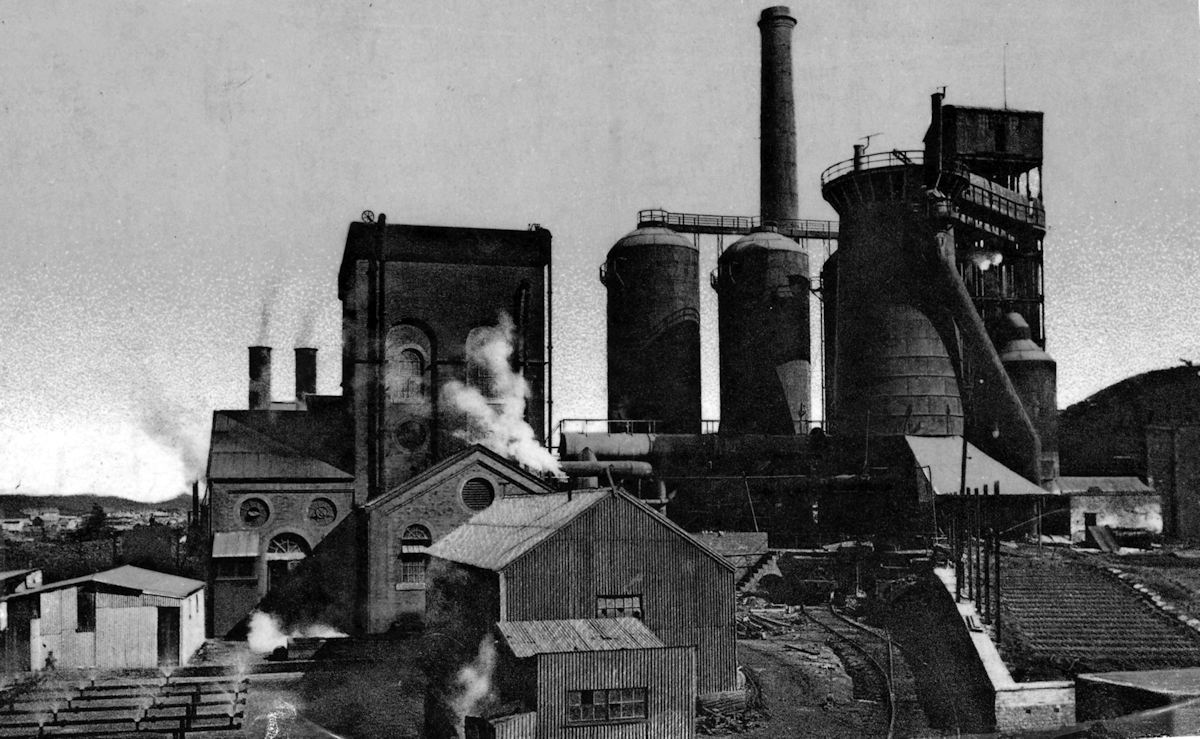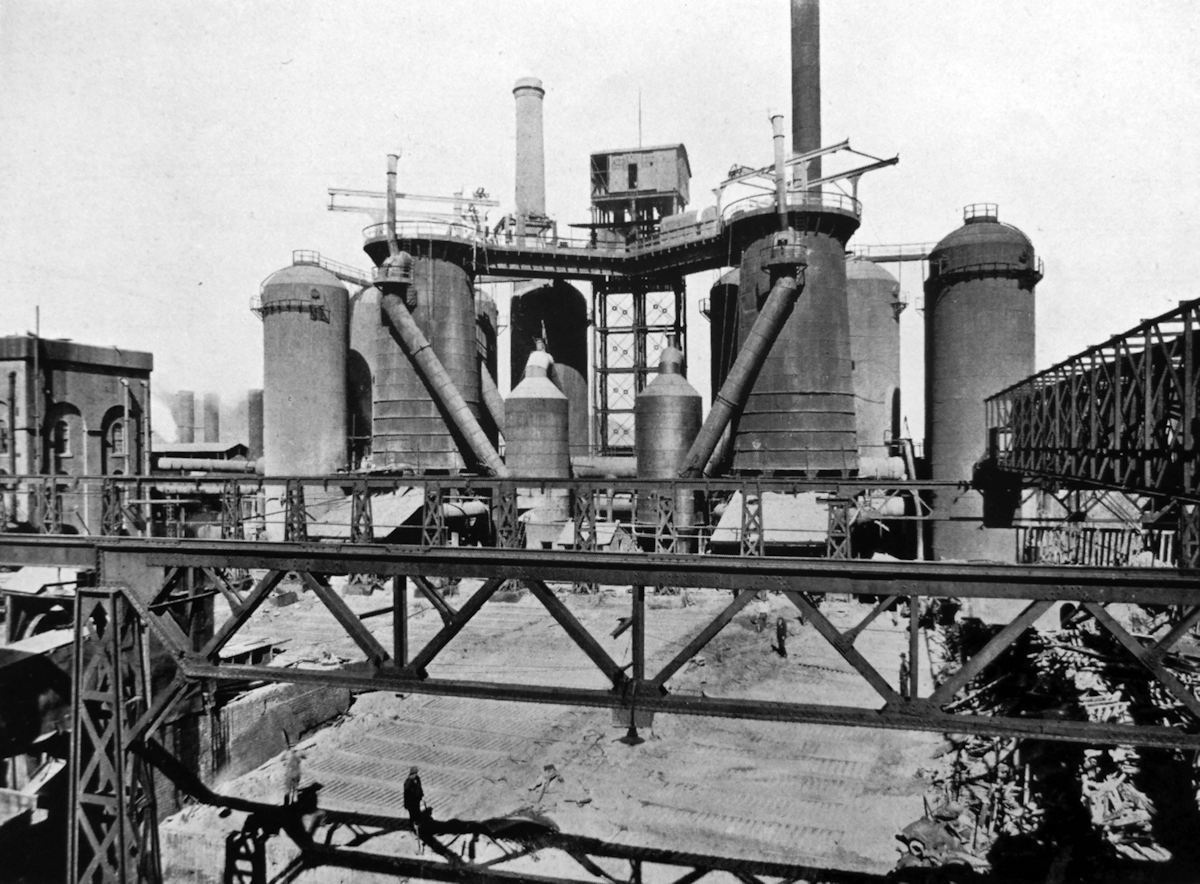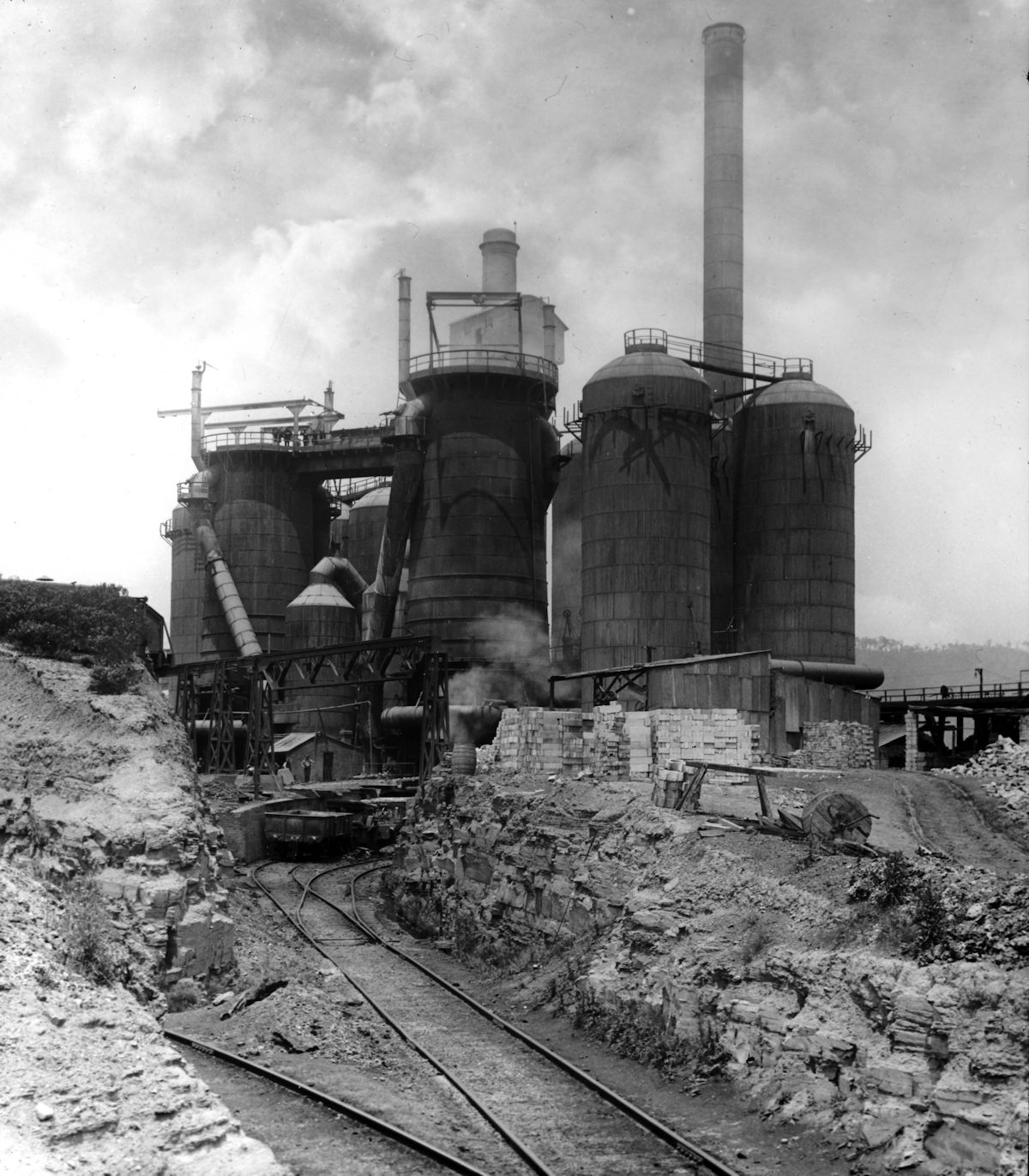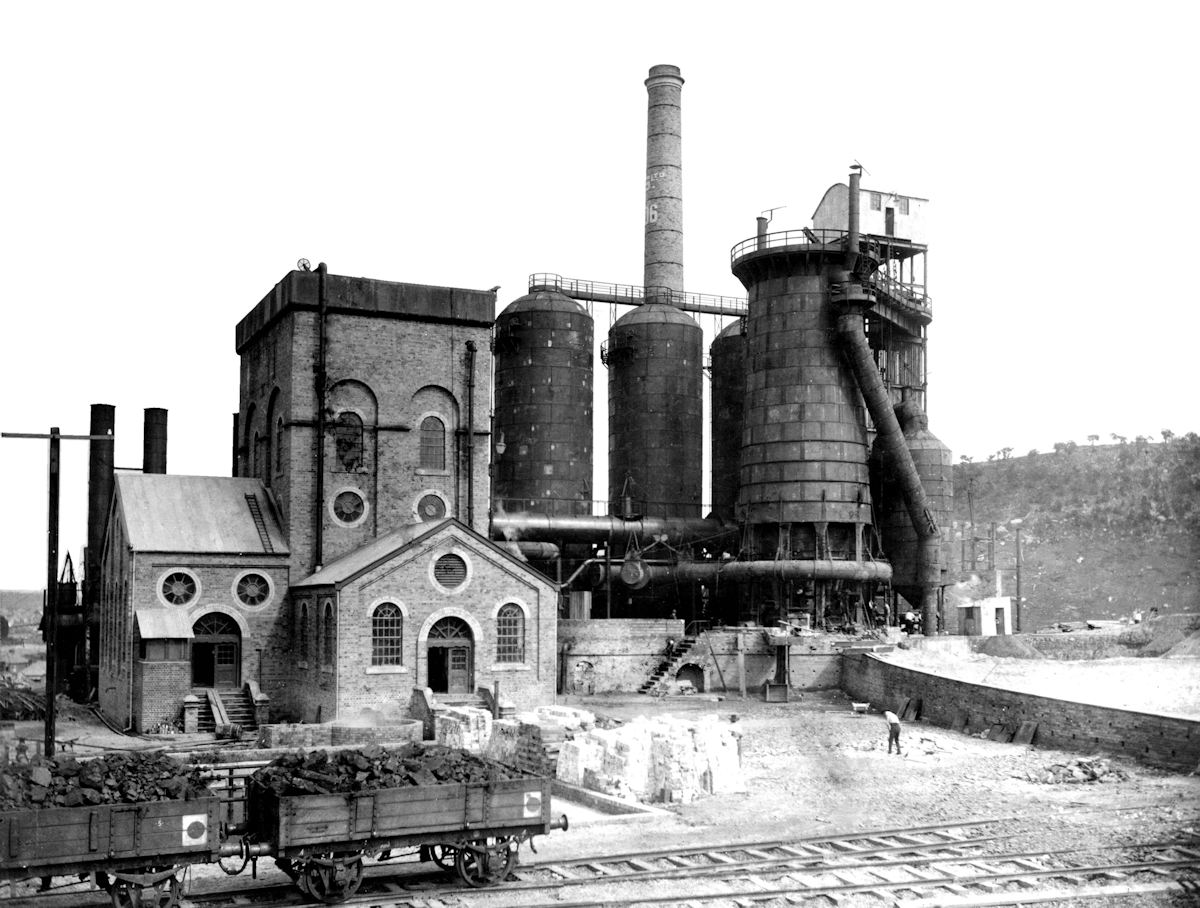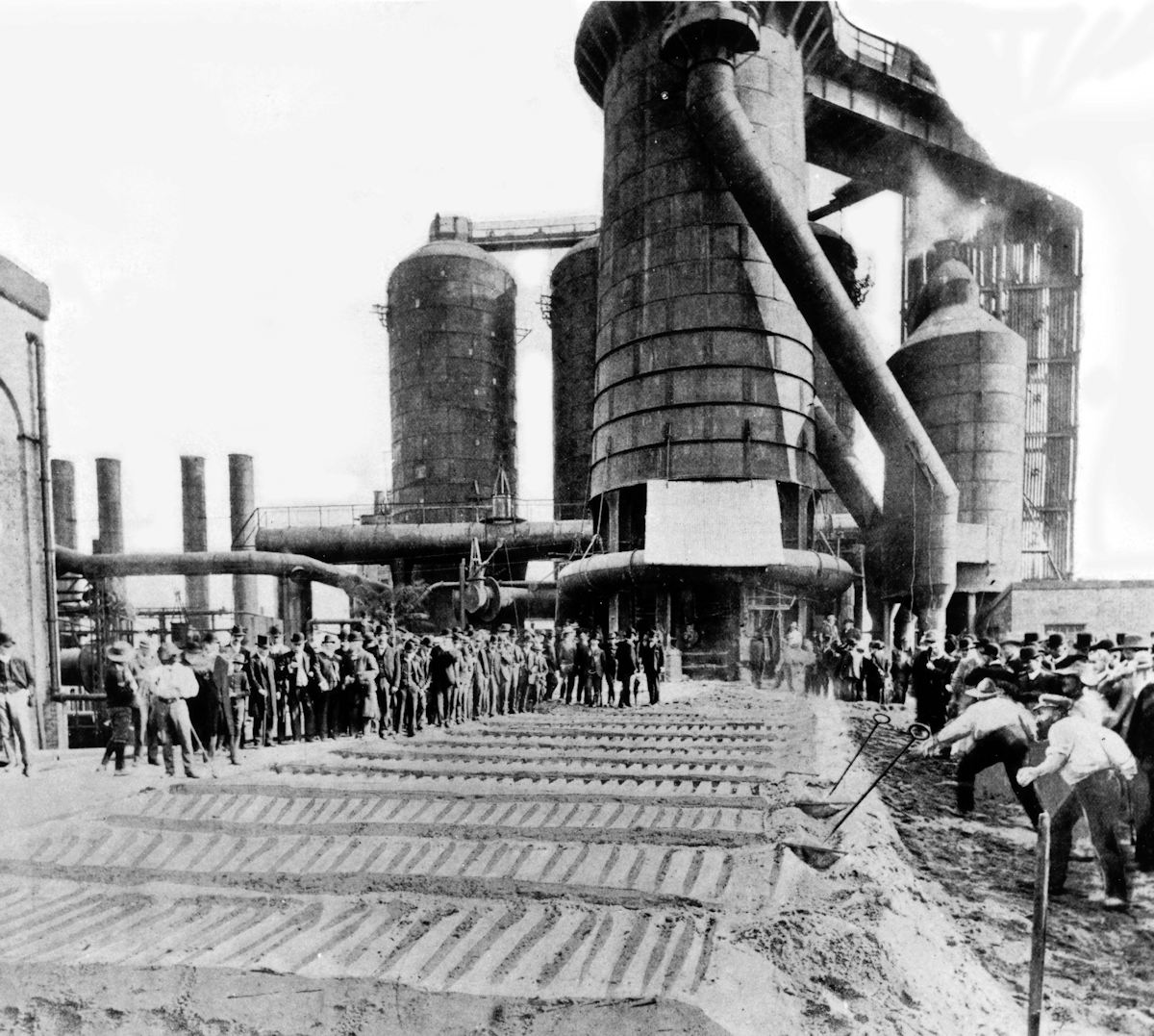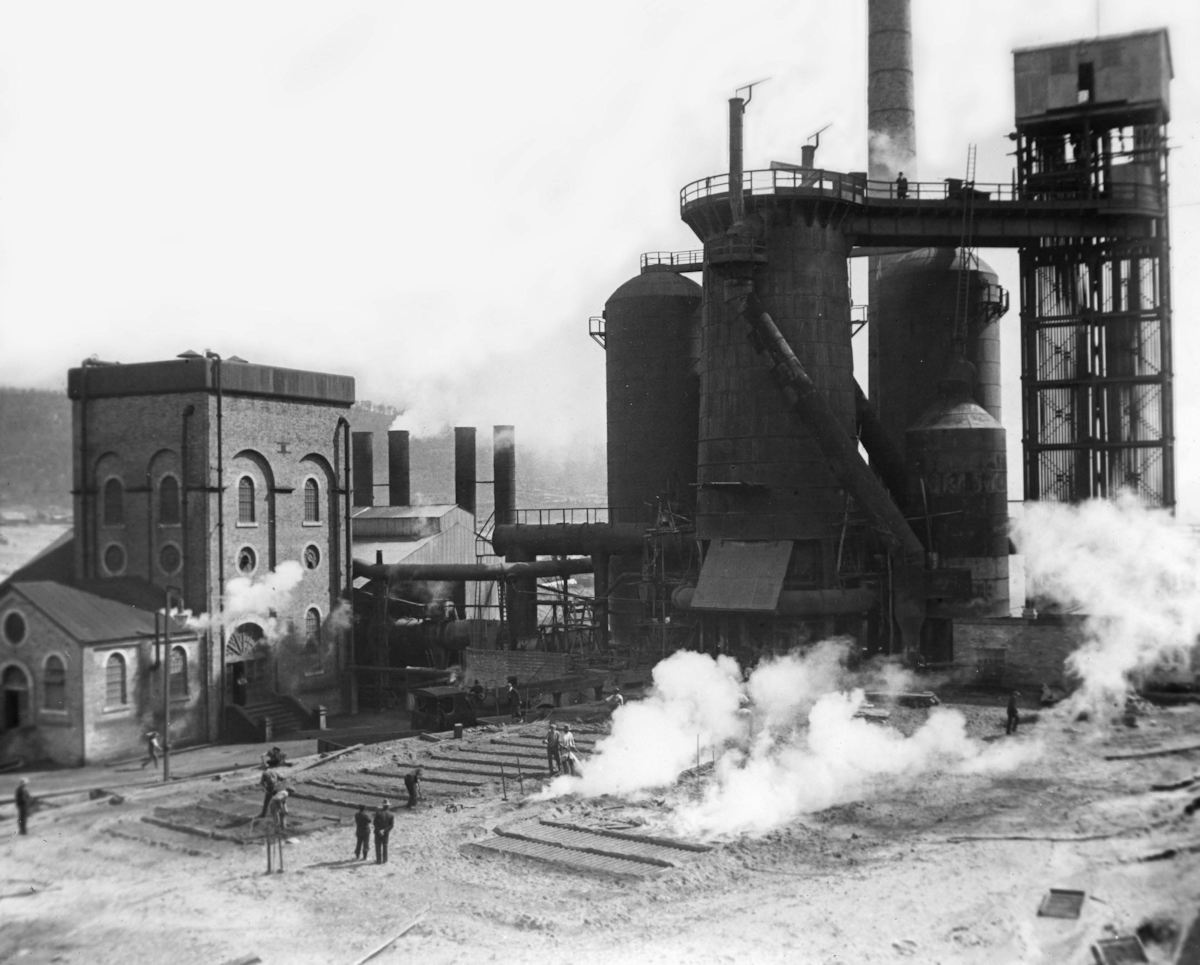Pigs and sow
A blast furnace smelts iron which is ‘run out’ to cool in moulds made in beds of sand, traditionally known as pigbeds. The pig beds occupied sloping ground (1:20) at the base of the furnaces. Workers prevented overflow manually using long handled ‘stoppers’.
The ‘pigs’ were 30 cm long, connected to a longer bar known as the ‘sow’. The pigs were broken off the sow to be transported.
Pig breaker and travelling crane
In 1916 Charles Hoskins installed a pig breaker and a travelling crane, supported on two parallel gantries. Two cement rendered brick walls are the remnants of the base of the pig breaking machine.
Wagons deep in the cutting in front of blast furnace No.2. The small timber structure behind the stack of bricks may be the pug mill. State Library of Victoria
In March 1907 there were no rail sidings to the base of the blast furnace. G&C Hoskins Ltd built two rail sidings to the base of the blast furnaces after taking over the operation. Sandford Paper, State Library of NSW
Supply and deliver
A rail connection was necessary to supply raw materials to the blast furnace and deliver pig-iron to the iron and steel works or the market. Little remains of the extensive network of rail sidings that once surrounded the blast furnaces as the rail was taken for scrap during demolition.
Siding to No. 1
The rail siding to No. 1 blast furnace was built by G&C Hoskins. This siding was used to transport pig iron to the iron and steel works and to remove the slag.
The brick revetment wall that you see separated the pig beds from the rail siding.
No.2 siding
Although not visible from this location there is an excavated area north of the pig beds. This rail siding was laid
to the base of blast furnace No.2 between 1911 and 1913. Its primary purpose was to transport molten iron in ladles to the steelworks over the Inch St bridge.
This siding has been badly degraded after rubbish was dumped at its open end, creating a swampy area.
Liquid iron
A team of men drilled into the hardened clay which sealed the tap hole at the base of the furnace then wielded a heavy bar to clear it. They jumped back as the molten iron gushed out into the moulds. This process could take a minute or nearly an hour. Sometimes the liquid iron burst out by itself.
The moulders
In between taps, ‘the moulders’ made a long sand runner from the tap hole down the length of the bed. At right angles to this runner they used a wooden pattern to make the rows of sand moulds for the sows, and repeated the process to make the ‘pigs’.
When the liquid iron ‘ran out’ it travelled down the main runway to fill the bottom row first. As each row filled, a man rushed up with an iron stopper to divert the stream into the next row. In this way the men gradually worked their way back up to the furnace…”hoping in the process he would not get burnt too much.” Cecil Hoskins:The Hoskins Saga
This process continued until the cast was finished. Each cast produced 18–36 tonnes of pig iron.
Hot and heavy work
While the iron was still hot men shovelled sand over the cast. When it was set they put on wooden clogs to walk on the bed and prise the pigs off the sow with long bars. Another man broke the sows with a heavy hammer into 60 cm lengths. The men used tongs to stack the pigs in a crisscross fashion for manual handling into trucks.
It was a relatively simple process but extremely heavy and hot work.

